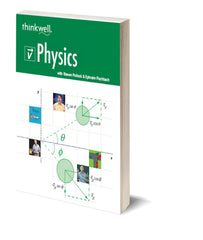6.1 Systems of Particles and the Center of Mass
6.1.1 The Center of Mass of a System of Particles
6.1.2 The Center of Mass of a Rigid Body
6.1.3 The Center of Mass and the Motion of a System of Particles
6.1.4 Physics in Action: Motion and the Center of Mass
6.2 Describing Angular Motion
6.2.1 Angular Displacement, Velocity, and Acceleration
6.2.2 Rotation with Constant Angular Acceleration
6.2.3 Relating Angular and Linear Quantities
6.3 Rotational Inertia and Kinetic Energy
6.3.1 The Kinetic Energy of Rotation
6.3.2 Calculating the Rotational Inertia of Solid Bodies
6.4 The Dynamics of Rotational Motion
6.4.1 Torque
6.4.2 Newton's Second Law for Rotational Motion
6.4.3 Solving Problems Using Newton's Second Law for Rotational Motion
6.4.4 Work and Power in Rotational Motion
6.5 Rolling
6.5.1 Understanding Rolling Motion
6.5.2 Solving Problems Involving Rolling Motion
6.5.3 Physics in Action: A Downhill Race
6.6 Angular Momentum
6.6.1 The Definition of Angular Momentum
6.6.2 Torque and Angular Momentum
6.7 Conservation of Angular Momentum
6.7.1 Understanding Conservation of Angular Momentum
6.7.2 Physics in Action: Conservation of Angular Momentum
6.7.3 Solving Problems Using Conservation of Angular Momentum
6.8 Precession
6.8.1 Understanding Precession
6.9 Statics
6.9.1 The Conditions for Static Equilibrium
6.9.2 Understanding Stable Equilibrium and the Center of Gravity
6.9.3 Solving Static Equilibrium Problems








